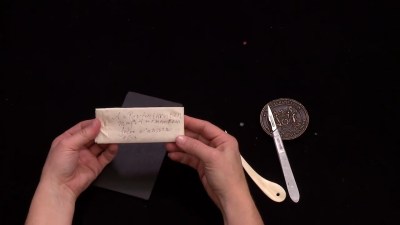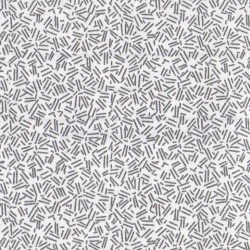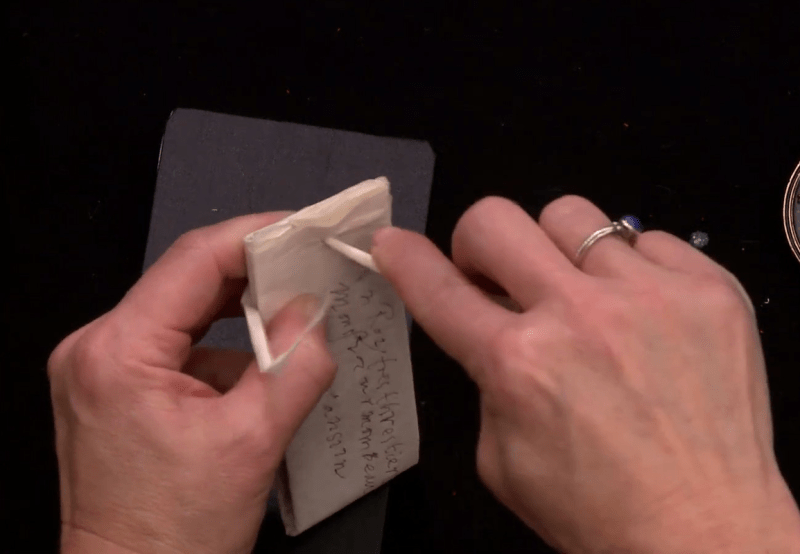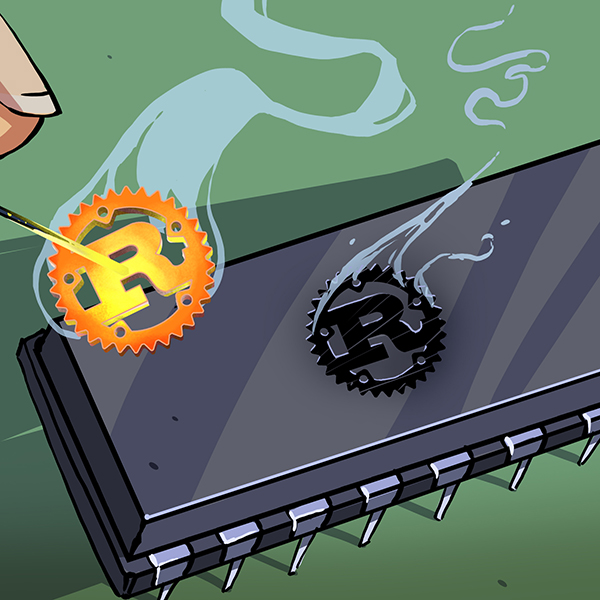You probably get a few of these things each week in the mail. And some of them actually do a good job of obscuring the contents inside, even if you hold the envelope up to the light. But have you ever taken the time to appreciate the beauty of security envelope patterns? Yeah, I didn’t think so.
The really interesting thing is just how many different patterns are out there when a dozen or so would probably cover it. But there are so, so many patterns in the world. In my experience, many utilities and higher-end companies create their own security patterns for mailing out statements and the like, so that right there adds up to some unknown abundance.
So, what did people do before security envelopes? When exactly did they come along? And how many patterns are out there? Let’s take a look beneath the flap.
Before Envelopes, There Was Letterlocking
Pretend it’s 1525 and you have some private correspondence to send. Envelopes won’t come along for another three hundred years, at least not on a commercial scale. So what do you do? A common practice since the end of cuneiform tablets was a technique called letterlocking. This is a method of folding the paper of your letter in such a way that it becomes its own envelope, often using slits and tabs running throughout the creased letter. A wax seal was often employed for good measure.

The video below shows a model of Mary Queen of Scots’ last letter, written a few hours before she was beheaded, being letterlocked. Many say that writing this missive was her last act, but after that, it was performing this spiral letterlock to ensure the contents reached her brother-in-law without obvious tampering.
The letter is written on a large sheet of paper folded in half, with plenty of space in the left and right margins. This is where the slits and the tab that binds it all together will end up. Once written, the sender starts by folding a narrow spine into the left margin where the sheet is connected, then cutting a long, thin slice, leaving one short end attached.
Then the letter is then folded top to bottom twice, minus the slice. Then a hole is cut through all the layers and the the slice is pushed through the hole, wrapped around the letter packet and stuck through again until none remains. Finally, the slit and slice are coated with a bit of water so that the paper swells, sealing the lock. This is where sealing wax would come in handy.
The point of letterlocking is that it was impossible to open the letter without causing a least a little bit of damage. So, if you received a tampered-with letter, it should have been quite obvious. Today we can see through locked letters without opening them thanks to x-rays. If you don’t like this method, here are step-by-step instructions for three different letterlocking methods.
The Rise of Security Envelopes
The mass-produced envelope came along in 1830. They started out thick enough to write addresses on and subsequently obscure the contents, but eventually got thinner and thinner as paper advanced. When the windowed envelope was invented by Americus F. Callahan in 1901 and patented 1902, envelopes became a real problem.
Fortunately, one Julius Regenstein of the Transo Envelope Company would invent the security tint just two years later in 1903. And that’s about all we know about the origin story, unfortunately. There isn’t even a Wikipedia page for security envelopes. Can you believe that?
The Good, the Bad, and the Ugly
In the biz, they’re called security tints, and there are a few companies like SupremeX out there generating new ones. The two most common tints you’re likely to see are confetti and some variation of the crosshatch pattern, which is just a bunch of intersecting lines. Both of these do a fine job of obscuring the contents of letters.

The most common tints I’ve seen are black on white. Blue on white is a close second, but only represents maybe a third of my own personal collection. Red seems to be pretty rare except for mailings from the Red Cross , and I only have one lone envelope in green so far. I do have one highlighter-green return envelope from Globe Life with small black dots in overlapping concentric circles. It’s pretty hard to look at, honestly, but it’s still beautiful.
Usually the tints you see are some kind of abstract, entropic pattern, but sometimes a phrase like THANK YOU or PLEASE RECYCLE THIS ENVELOPE is repeated instead. And then of course, there are all the individual company tints. You can see many, many examples of these and more in the worldly collections of both [Dan Schreck] and [Joseph King], but some of my own collection are below.
For Your Own Security
Of course, you can pick up a box of security envelopes from the drugstore. But if you want to generate and print your own, have at it here or just run it in the browser. There’s a pattern generator in 12 colors plus grayscale, you can change the size of the pattern repeat, and there’s a randomizer if you’re not artistically inclined.
I hope you look at security envelopes a little differently now. Maybe you’ll start collecting them. If so, here are a bunch of ideas for using them. Or, you could send them to me.























Was really hoping for a discussion of what does and doesn’t work for security tints. For instance, have there been any designs that were abandoned because they were determined to be ineffective? Was there a progression in designs over the years, either due to a better understanding or due to improved technology?
And are there designs that are better for Latin alphabet, Cyrillic, Chinese, Devanagari etc.?
And if you want to read a sealed letter-locked letter, we have you covered.
https://hackaday.com/2021/03/06/x-ray-defeats-letterlocking-unfolds-and-reads-letter-sealed-since-1697/
I did the x-ray work on this.
But I print out PGP encrypted mail and send it to friends who OCR it.
I have always found the topic idly interesting, but now I am reminded; I do not think I have received envelopes like that for maybe 20 years. Only exception have been new credit cards.
I worked in elections for many years. We used a separate sleeve/folded sheet (usually colored and with printed instructions for ballot return) in which the voted ballot was to be placed.
Does this include those govt tear off along the perforations three sides of this print out-envelope for important personal info and the commercial deceptive mailers as well? They sometimes have this lining. They are hard to tear off neatly and all that for an offer for roofing. I have a blue bin right under my porch mail box, junk mail goes directly in there.
I had occasion to use a security envelope the other day and found that simply shining a decent flashlight at it was enough to defeat it completely. The next pass involved a sheet of dark construction paper folded with the letter, which worked fine.
An explanation of why just making the inside black wouldn’t be SEB (Simpler, Easier, Better) would have been much appreciated. Shirley there’s a reason?
Cost. It’s cheaper to print a pattern with 10% ink coverage than 100% coverage. Plus the black would need to be very opaque, whereas the tint only has to interfere with the text of the letter to obscure it.
And stop calling me Shirley!
If you wet paper with a liquid of similar refractive index to the paper fibers, you can make it nearly as transparent as glass (at least with cheap and uncoated paper, which businesses use). I wonder if these security tints are effective in that case? It seems like they certainly wouldn’t be if the ink is a different color to the writing inside.
Most of us are familiar with this effect from food grease, especially clarified butter, and if you used that then the envelope would be permanently stained. But there are probably volatile liquids that could do the job and evaporate without an obvious trace.
Or you could just use the technique described in Peter Wright’s “Spycatcher”, where MI5 would use a split bamboo stick to remove letters from envelopes without opening them.
In the late 80’s I mail ordered a can of X-ray spray that did exactly that. It was some volatile hydrocarbon I can still remember the smell. It rendered an envelope very transparent then evaporated off quite quickly.
This is commonly done by stamp collectors to view watermarks.
Love the envelope generator, I’ve now got envelopes with Spaceinvaders, Galaxians, Pacman and QBert
A local store in my city sells envelopes that are made out of old maps. This has several advantages:
• Environment-friendly because they don’t even need to use recycled paper.
• The map paper is very thick, opaque and has a nice feel to the touch.
• The backside is white, so it can be used for the outside of the envelope. The map inside serves as security pattern.
• It looks beautiful.
No idea where they get the maps. It looks like it might be old stock from a shop that never sold.
If there’s enough demand to make a business out of, chances are they are actually manufacturing new maps somewhere cheap just for the point. Whatever old stock they had probably ran out years ago.
Example, see can pull tabs in arts and crafts stores, sold by the bag. No-one’s tearing those off of discarded soda cans.
What’s an envelope?